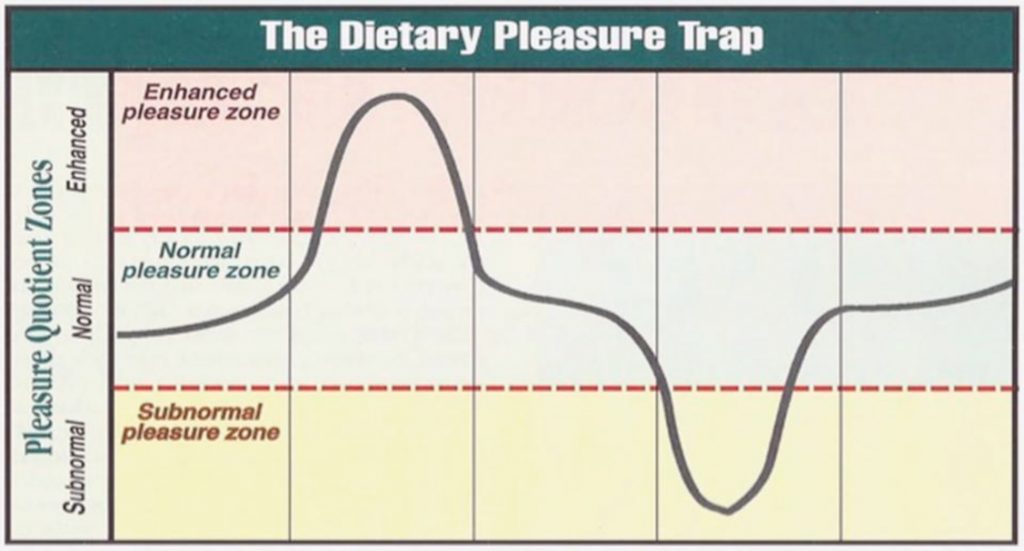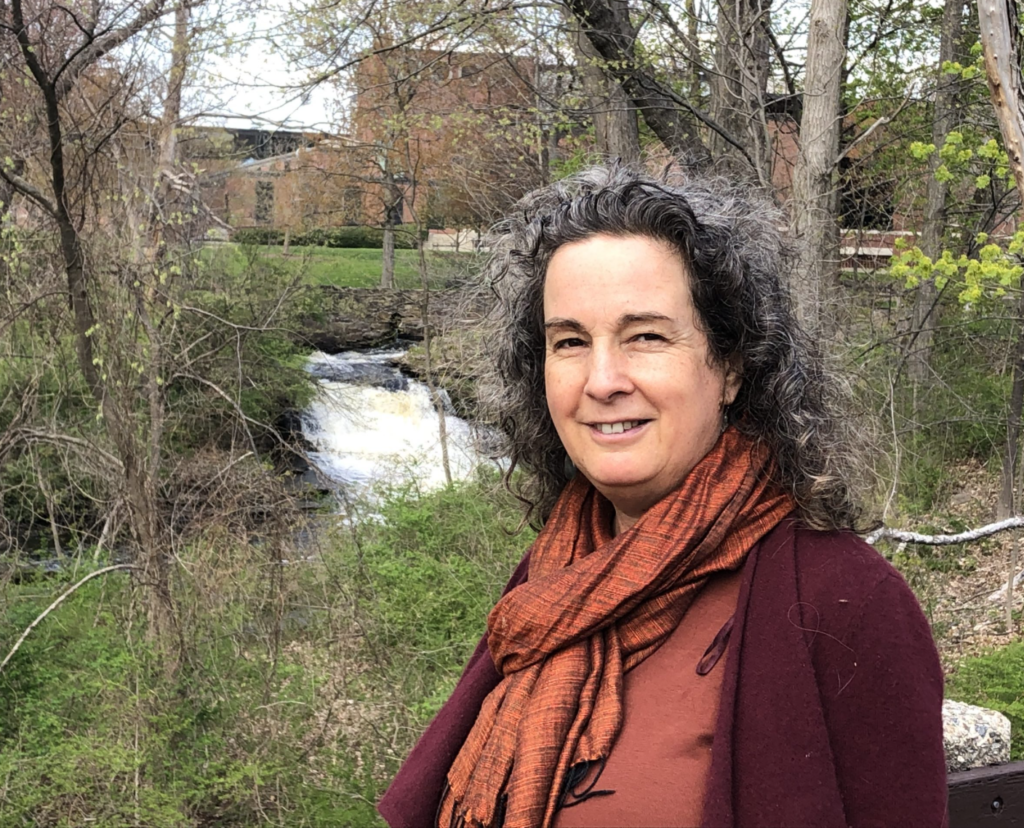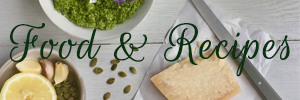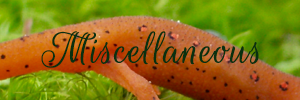Guest Blog by Lior Sadeh, Herbalist & Owner of Bee Fields Farm
Your body is a force of nature. No, I do not mean that as an empowering affirmation but as a scientific fact. The forces that work within your body are the same biological, chemical, and physics forces as those that work in nature.
If you ever tried to curb your craving or go on a diet, you know that it is tough to tame your food cravings very much in the same way that it is hard to tame a hurricane.
If you watch and listen to social media, magazines, and billboards, you do not control your food cravings because you are lazy. But this is not true. Fighting your own body is a mighty task that has nothing to do with how strong your will is and everything to do with the innate wisdom that designed your body the way it is.
That means that you are not responsible for your food cravings. It does not mean that you give up in total surrender. Cravings are the foundation of addiction. Like any other addiction, food craving can become destructive to your physical, mental, and emotional well-being. This is why understanding food craving is so essential.
Human beings first appeared on Earth some 2,000,000 years ago. Agriculture developed about 10,000 years ago. Modern Western Society, where most people in developed countries have access to abundant food, happened only in the past 100-150 years. That puts things in perspective, doesn’t it?
From the beginning of human existence, three things motivated human behavior:
- Pleasure seeking
- Avoiding pain
- Conserving energy
It is important to understand that the motivational triad is unconscious and fast-acting. Therefore, it is hard to control behaviors that are motivated by the motivational triad.
To survive as a species and as individuals, humans had to develop behavior mechanisms that rewarded them for behaviors that contributed to their survival. The brain was developed to reinforce survival by rewarding you with pleasure when behaving to promote the motivational triad.
Food that triggers the pleasure-seeking part of the brain may compel you to think that you are working toward survival and reproduction. Still, if that food is nutrient depleted, then, in reality, you might be self-destructive.
The dietary pleasure trap:
The dietary treasure trap describes what happens in the brain when you eat foods that your brain was trained to believe are highly nourishing. Your brain was trained to release dopamine, the pleasure hormone, in response to certain smells and tastes.

The graph above describes four different stages in your response to food
(watch Doug’s TedTalk video here):
- 1. On the first response, you can see what happens in the brain when we eat everyday healthy food that we are designed to eat. There is a mild elevation in dopamine. We enjoy the food, but we do not get drugged on it.
- 2. In the 2nd stage, we are introduced to food stripped from fibers, minerals, and vitamins. The food is much easier to break down and utilize as an energy source (remember the energy-conserving motivation). Each bite from that food will give a much higher caloric intake. Therefore causing your brain to think, “There is more energy per bite that must be good.” Now the brain will release a higher dose of dopamine that will dope you. You might recognize the feeling after a meal heavy with carbohydrates or a massive piece of cake. Your energy levels drop down, your mind feels lethargic and relaxed, and you feel calm.
- 3. In the 3rd stage, the brain will try to defend itself against the high stimulus that the dopamine triggers by dulling the sensation so over time, you do not experience the same pleasure. Now your brain becomes habituated to this very rich food. You are getting the same amount of satisfaction that you always got from food, but the food you are eating is much richer, leading to diabetes, cancer, and obesity.
If you know that the right thing to do is stop eating rich food, why is it so difficult?
When you go from eating healthy food to high in calories and low in nutrient foods, you do the wrong thing, but it feels right. But when you are doing the opposite, moving from high-calorie nutrient-empty foods to nutrient-dense food, you might know in your logical mind that you are doing the right thing, but in your hypothalamus, it feels like you are doing the wrong thing.
Recovery is going to take several weeks because it requires you to develop a new sensitivity to food. To do that, you will need to avoid the foods that pulled you into the pleasure trap to begin with.
When I started playing with elimination diets a couple of years ago, I completely eliminated sugar. A year into my diet, my family looked for an air-conditioned place to get some relief from the heat on a scorching summer day. We chose a Barnes & Nobles store (because we are bookaholics) with a Starbucks cafe. Long story short, I ordered a decaf, dairy-free iced latte. After one sip, I dumped it in the garbage. It was so sweet it was nauseating.
The main three culprits that can pull you into the pleasure trap:
Sugar
was not available for the hunter-gatherer, but the sweet taste was associated with high caloric foods like tubers and roots. Think wild potatoes, burdock, and such. Now imagine how much effort needs to go into digging the roots without shovels. The calories in the roots were always tied down to plenty of fibers, so your digestive tracts required you to spend some energy to release all this goodness from the root.
Sugar was first produced from sugar cane plants in Northern India sometime after the first century AD. Sugar is high in concentrated calories without the nutrients found in the whole sugar cane or roots and tubers.
I consider sugar a drug like other white powder drugs (cocaine) because it triggers the same reaction and habituation reaction in the brain.
Salt
Salt – We add salt to food to enhance the flavor of the food in the modern diet, but in history, salt was used to preserve food and was an expensive mineral that was hard to obtain. Salt production goes back about 8000 years ago, just a minute in the timeline of human brain development.
Monosodium glutamate is a popular food additive used in cooking as a flavor enhancer with an umami taste that intensifies the meaty, savory flavor of food, as naturally occurring glutamate does in foods such as stews and meat soups. It reminds your brain of a good hunting day without the need to put in all the hard work.
You can experiment with eating two handfuls of almonds, one unsalted and one salted. Which one tempted you to reach for another handful?
Fats
From all the macronutrients (carbohydrates, proteins, and fats), fats require less energy and nutrients to transform into fuel for the body. Per gram, fats carry more calories than carbohydrates or protein (both have 4 calories per gram while fats provide 9 calories per gram). For the hunter-gatherer, fat came from either animal fat or seeds and nuts. Most of the fat a conventional Western diet contains are man-made synthetic fats that are not mitigated by either protein or fiber.
By massing with the environment by developing foods that are high in calories but are nutrient depleted, we massed with our brain.
Processed foods companies harnessed brain science to develop food products that contain the exact amount of salt, sugars, and fats that will make their products highly addictive.
Now that you understand how sugar, salt, and fats press the buttons in your mind, how can you take back control over your cravings?
Tips for taking back the power over your cravings:
- Sugar is the most addictive of the three. If you want to get rid of sugar addiction, you must avoid sugar completely for 6-8 weeks. If you are addicted to sugar (aren’t we all), you will need to watch your sugar intake even after reintroducing it back to your diet. Like with any addiction, reintroducing the substance can easily become a slippery slope.
- When eliminating a specific food, you want to reward yourself with other food that you love. Make a list of the foods you enjoy eating and do not contain sugar (or other simple carbs such as bread and pasta). Invest your time in preparing meals that you will enjoy.
- Start your day with lemon water. Lemon water will balance your blood sugar and help reduce peaks and drops that lead to cravings. In the summer, I slice one lemon and add it to my water bottle. (I refill the bottle with water a couple of times before refreshing the lemon) In the winter, I enjoy lemon ginger or lemon rosemary tea at the beginning of my day.
- Eat 2-3 meals a day without snacking in between. Snacking is not just damaging to your motility, it also promotes mindless eating.
- Start your day with 25 grams of protein. Protein will keep you satiated longer and prevent the need to snack.
- Practice mindful meditation and mindful eating. The entire idea of mindfulness is not what happens when you sit on the pillow, but how what you practice when you sit to meditate changes the wiring in your brain. One of the benefits of mindful meditation is slowing down and giving yourself the time to decide with your prefrontal cortex rather than your limbic brain.
- Be compassionate with yourself! Getting rid of cravings is a process, not a place that you reach and can rest in peace. It is a lifelong journey. Be prepared for setbacks and hard days. Guilt and shame over setbacks harm your process. They cause stress that promotes emotional cravings.
Watch This Video with Lior on Cravings
Join Lior On Your Journey
Lior is leading an 8-month program for women who yearn to deepen their connection to the plant world, use herbs in their everyday life, and indulge in a nourishing diet. The program begins in January, 2022, but you can register now through December 21, and the early bird rate ends November 30, 2021.
Click here to learn more and register
About Lior
My name is Lior Sadeh. I am a herb grower, herbal remedies maker, and herbalist. A couple of things you want to know about me:
- My favorite place in the early morning hours of the summer is in the garden amongst the healing plants. (I LOVE WEEDING)
- My favorite place in the winter is snuggled with a cup of warm tea and a book. I am ADDICTED TO BOOKS about functional nutrition, herbalism, and a healthy mindset.
- I take FOOD very seriously. I grew up in Israel, where fresh high-quality food is the standard diet. I LOVE COOKING, EATING & SHARING A GOOD MEAL WITH FRIENDS AND FAMILY.
- I am a great believer in the BODY INNATE ABILITY TO HEAL ITSELF. I see it as my life mission to help others connect to their bodies in ways that will optimize their well-being.
The statements made on this blog have not been evaluated by the FDA and are not intended to diagnose, prescribe, recommend, treat, cure, or offer medical advice. Please see your health care practitioner for help regarding choices and to avoid herb-drug interactions.
None of these links are affiliate links for Maria Noel Groves/Wintergreen Botanicals. Maria does not make a commission on class registrations. Views expressed by Lior and shared in her program are her own and although we often share similar viewpoints, they do not necessarily represent the views of Maria Noel Groves and Wintergreen Botanicals.









